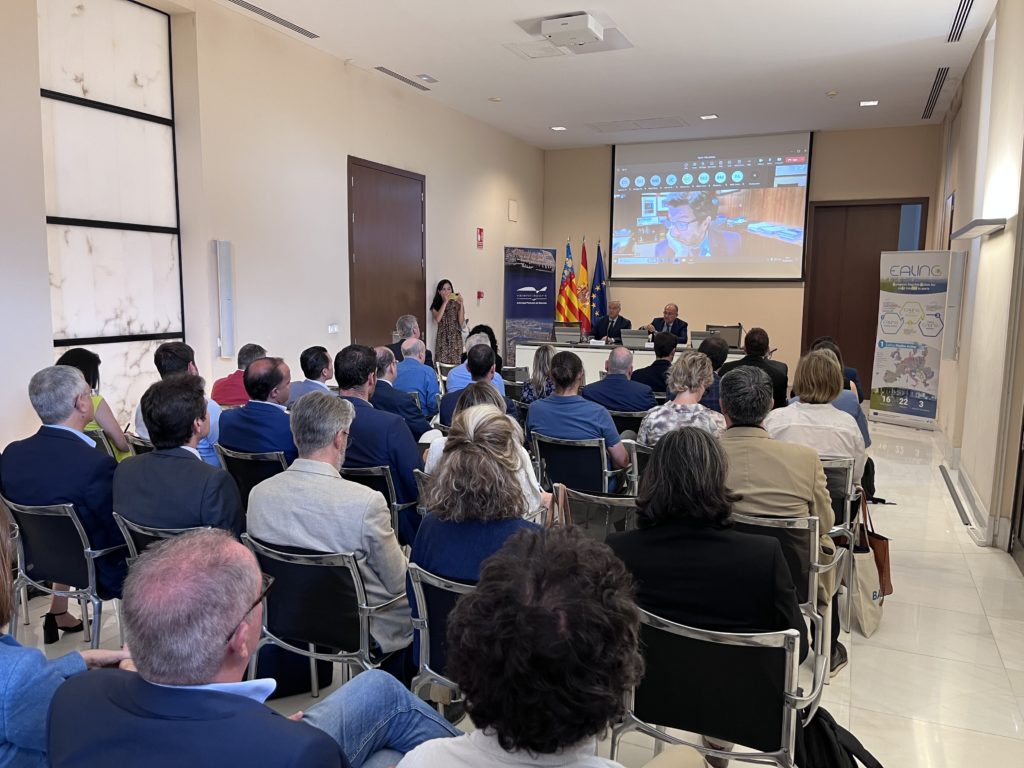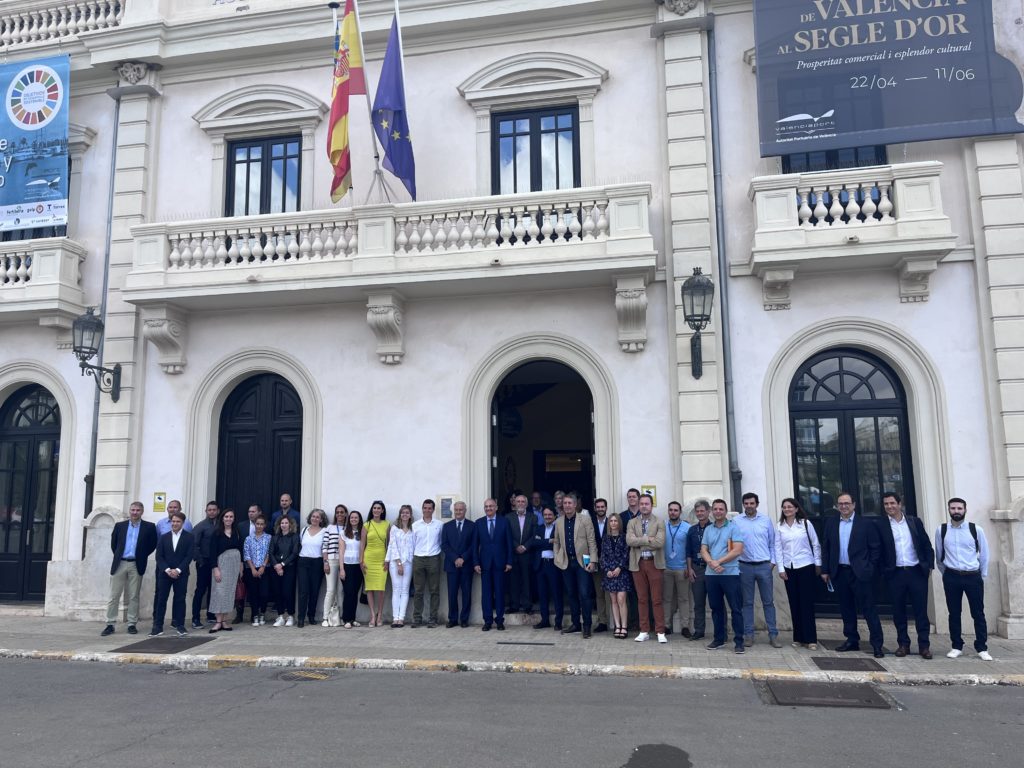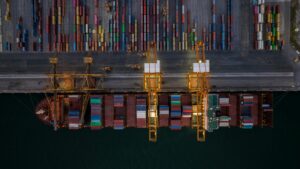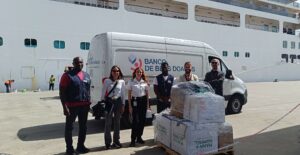- The tender for the first OPS electrification project to be located at the Costa-MSC Transversal quay goes out to tender this June with an expected investment of 11 million euros. The second project on the Balearia-Transmediterránea quay will go out to tender in September.
- This was announced this morning by Federico Torres, head of Ecological Transition at the Port Authority of Valencia (PAV), during the conference ‘Electrification of Ports: Projects in Development’ which was held in the Clock building.
- Joan Calabuig, president of the Port Authority of Valencia, stressed that the social and environmental commitment of Valenciaport is complementary to competitiveness and economic growth: “The docks closest to the city will be the first to be electrified and will benefit the local residents by reducing gas emissions and noise”.
- The president of Puertos Públicos del Estado, Álvaro Rodriguez Dapena, has highlighted the great contribution to the decarbonisation process of the Valencian port area.
- After the conference, the exhibition dedicated to the environmental efforts of the port community of Valencia was inaugurated in the Clock Building of the Port of Valencia and can be visited until 11 June between 11.00 and 19.00 hours.
An ad hoc electrical network that will supply energy to ships and boats moored at the docks of the Port of Valencia. This is the aim of the first electrification project of the Valencian precinct which will be launched this June. This was announced by Federico Torres, head of Ecological Transition at the Port Authority of Valencia (PAV), together with Joan Calabuig, president of Valenciaport.
“This initiative requires an electrical substation, a transformer to adapt the installed power, the circuits to connect the ships and the connection boxes… and it will be a reality very soon and the docks closest to the city will be the first to be electrified”, Calabuig pointed out. The first OPS project in the port of Valencia will be located on the Costa-MSC Transversal quay and will involve an investment of 11 million euros. “In September, the second project will be launched, which will be located at the Balearia and Transmediterránea terminals”, added Torres. With them, he stressed, “we are going to contribute to the decarbonisation of the activity”.
Calabuig pointed out that the future objective is to connect this entire system with other renewable energies such as wind power. “This project, along with many others at Valenciaport, is the basis for sustainable and sustained economic growth in the future. For our part, the process of combating climate change is inexorable and inevitable. With the tender for the first electrification project, we are contributing to the elimination of all the polluting gases that leave the ships and also to the reduction of noise”.
The president of the Port Authority of Valencia also recalled that electrification means a reduction in emissions, but he also wanted to highlight the efforts of the shipping companies to use alternative fuels. “The port community as a whole is working in the fight against climate change and therefore for sustainability and decarbonisation. It is a joint social commitment, and the Port of Valencia is at the forefront. This could be seen in Rotterdam where the Port Authority of Valencia participated in a summit of the twelve leading international ports in the processes of decarbonisation”. “Sustainability is complementary to competitiveness and economic growth and in the case of Valenciaport, the commitment of the companies working in the port environment is extraordinary”, he added.
The announcement of the start of the project was made at the opening of the conference ‘Electrification of Ports: Projects in Development’. An event organised by the Port Authority of Valencia, together with Ecoport and the Valenciaport Foundation, and which was held on the occasion of International Environment Day. This forum has served as a meeting point for professionals from the Valencian port environment, authorities and representatives of national and international ports interested in knowing the details, benefits and objectives of the electrification project of the Valencian port.
Together with Torres and Calabuig, Álvaro Rodriguez Dapena, president of the public body Puertos del Estado, inaugurated the conference. In his speech, he stressed that the markets have already internalised the concept of the Green Port as a fundamental principle of economic competitiveness, and he highlighted the great contribution of the Port of Valencia to the process of economic decarbonisation. “Ports must also be green in their development and not only in their operation, both on the seaside and on the land side. That is why the railway is a key element in this framework”. And, in this development, “the Valencian enclosure is an example”, he pointed out.
Dapena reviewed the environmental goals set by Europe and the public body Puertos del Estado. Among them, he highlighted the 2030 objective of reducing emissions from ships by 55% (compared to the 1990 baseline). He also described the challenges and technical difficulties involved in the electrification of docks in port areas, “on a technical level: the installed power, the current capacity, the adaptation to the supply needed by ships, among other technical requirements, are a challenge. In addition, we must work to ensure that the electricity supply in ports is favourable in terms of price in order to make all the investments viable”.
During the conference, the deployment of solutions of the OPS (Onshore Power Supply) project of the Port Authority of Valencia was explained. This system allows ships docked in port to connect to the electricity grid, reducing their dependence on traditional fuels and helping to reduce CO2 emissions into the atmosphere. Divided into three working tables, the first one ‘Methodologies and Studies’ – moderated by Raúl Cascajo, head of environmental policies in Valenciaport – was attended by Obdulio Serrano, head of the Sustainability and Environment area of the Public Body Puertos del Estado; Juan Alonso Salvador, project engineer ISDEFE; and Anabel Soria, business development director of ITE.
The second-round table ‘Experiences in Spanish Ports’, with the participation of Jorge Martín, head of Quality, Environment, Innovation and CSR of the Balearic Islands Port Authority; Antonio Marcos, head of Infrastructures of the Bay of Cadiz Port Authority, together with Raúl Cascajo, was moderated by Santiago López.
At the third-round table ‘Experiences in International Ports’, the experiences of other port enclosures in the world in the matter of electrification were described. Representatives from the ports of Hamburg (Jochen Homann), Los Angeles (Amber Coluso), Switzerland (Nicole Costa) presented their projects.






